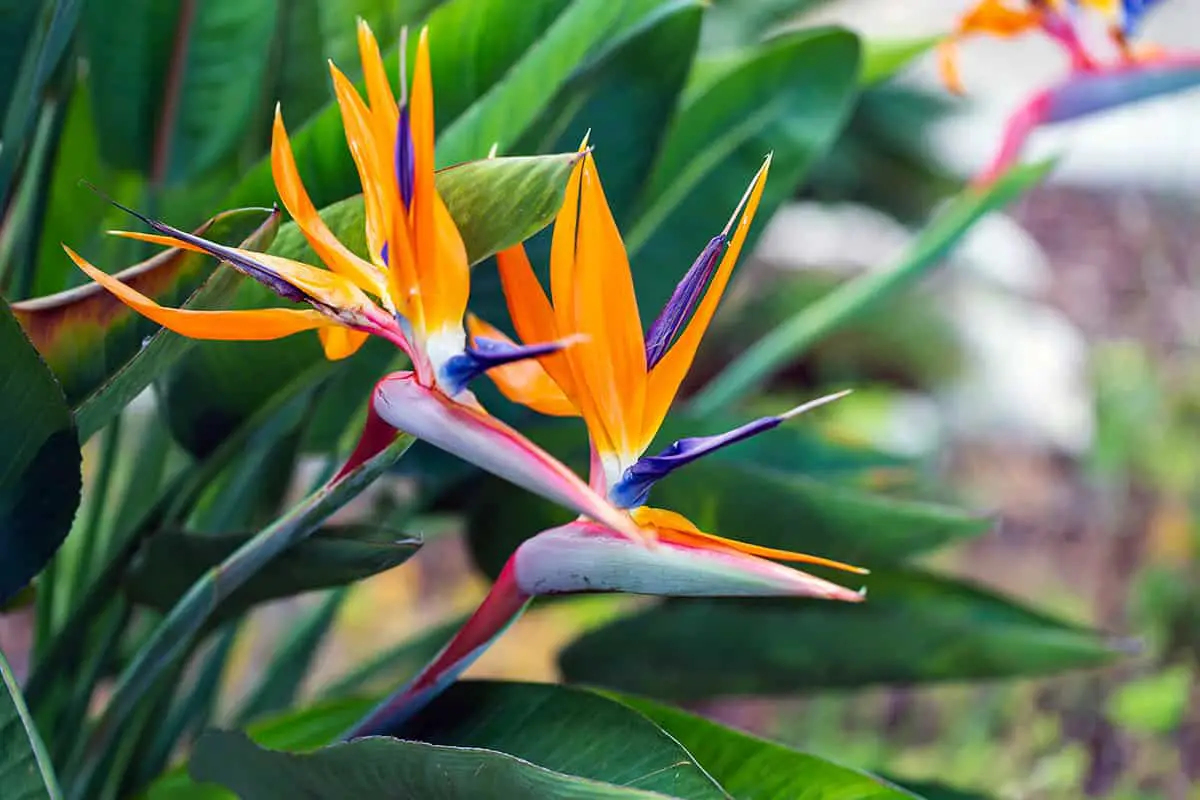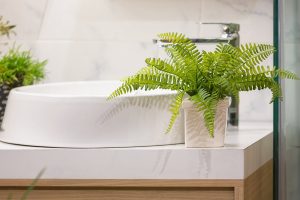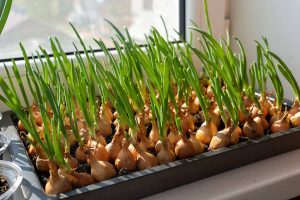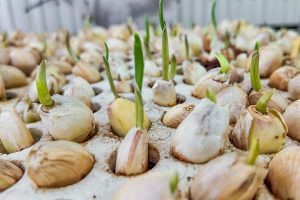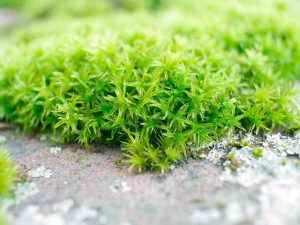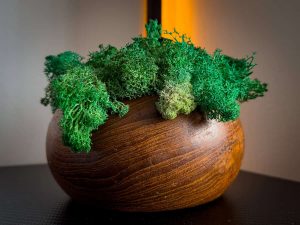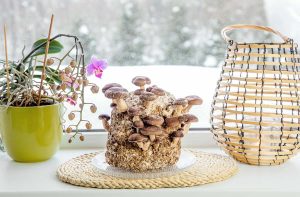The Bird of Paradise, with its vivid orange and blue flowers resembling a tropical bird in flight, is a true showstopper for any indoor space. However, achieving those magnificent blooms and lush green leaves can be challenging. Imagine placing your Bird of Paradise in the perfect sunny spot, only to see its leaves droop or its flowers fail to appear.
This detailed guide will provide specific care instructions, from the right type of soil and watering schedule to ideal light conditions and fertilization tips.
Table of Contents
Light
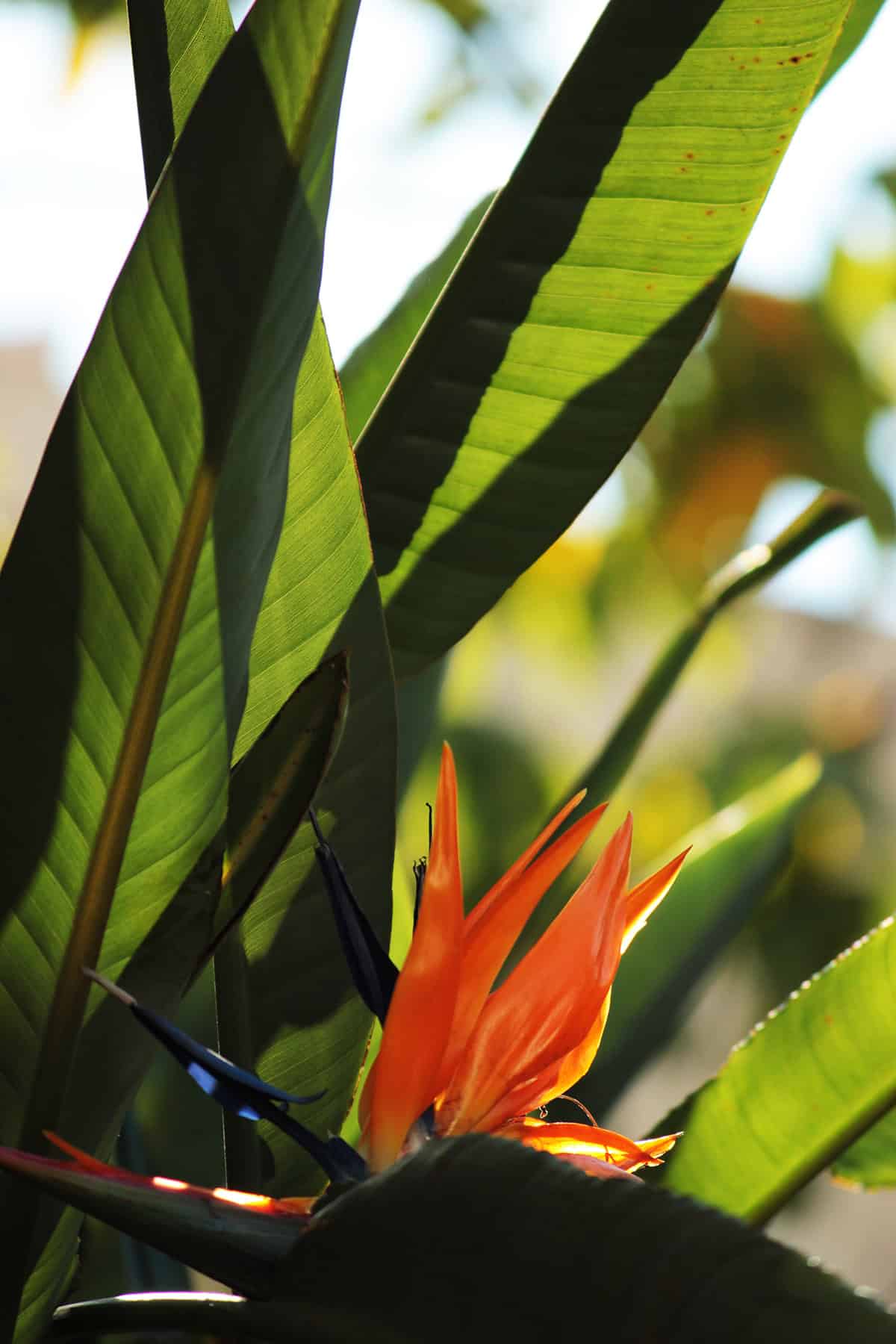
Your bird of paradise plant thrives in full sun to light shade conditions. To promote optimal growth, aim for at least 6 hours of sunlight exposure each day. However, keep in mind that this tropical plant can tolerate light shade and still grow well.
If you are growing your bird of paradise indoors, it’s important to place it near a bright window. Make sure it receives plenty of indirect sunlight. Avoid exposing your plant to harsh direct sunlight for extended periods, as it may cause the leaves to scorch and turn brown.
While meeting the light requirements, remember to rotate your plant every few weeks. This practice ensures that all sides of the plant receive adequate sunlight, promoting even growth.
Soil
Choose a fertile and well-draining soil to provide the best environment for growth. Your plant will thrive in organic-rich soil, which helps to retain moisture while still allowing excess water to drain away.
In general, Bird of Paradise plants can grow in most soil types. However, they perform best in fertile, organic soils with good drainage. For optimal growth, make sure the soil is slightly acidic with a pH level between 6-7. You can use a soil pH tester to determine the current level and adjust accordingly by adding amendments such as sulfur or lime, depending on the existing soil pH.
Make certain to keep the soil consistently moist, but not waterlogged. Overwatering could lead to root rot, while under-watering may result in the plant’s leaves turning brown and dry. A good irrigation practice is to water your plant deeply when the top few inches of soil feel dry.
To boost the overall health of your Bird of Paradise, it is beneficial to add organic matter like compost or well-rotted manure to the soil. This will provide essential nutrients and improve soil structure. Additionally, it’s valuable to apply a slow-release fertilizer during the plant’s active growing season, following the manufacturer’s guidelines.
Watering
Ideally, you should water your plant when the top two inches of soil feel dry to the touch.
One method is to water your plant deeply, allowing water to saturate the roots, until you see excess water draining from the bottom.
Be sure to avoid overwatering, as this can lead to root rot and other issues. Typically, indoor Bird of Paradise plants require less frequent watering compared to those outdoors.
It’s also important to note that these plants prefer humidity and may benefit from daily misting.
When selecting a location for your Bird of Paradise, consider an area with good drainage. It is crucial, as mentioned earlier, for the soil to remain damp but not waterlogged. Small adjustments, like elevating your pot on a tray filled with pebbles, can help to improve drainage.
Footnotes
Temperature and Humidity
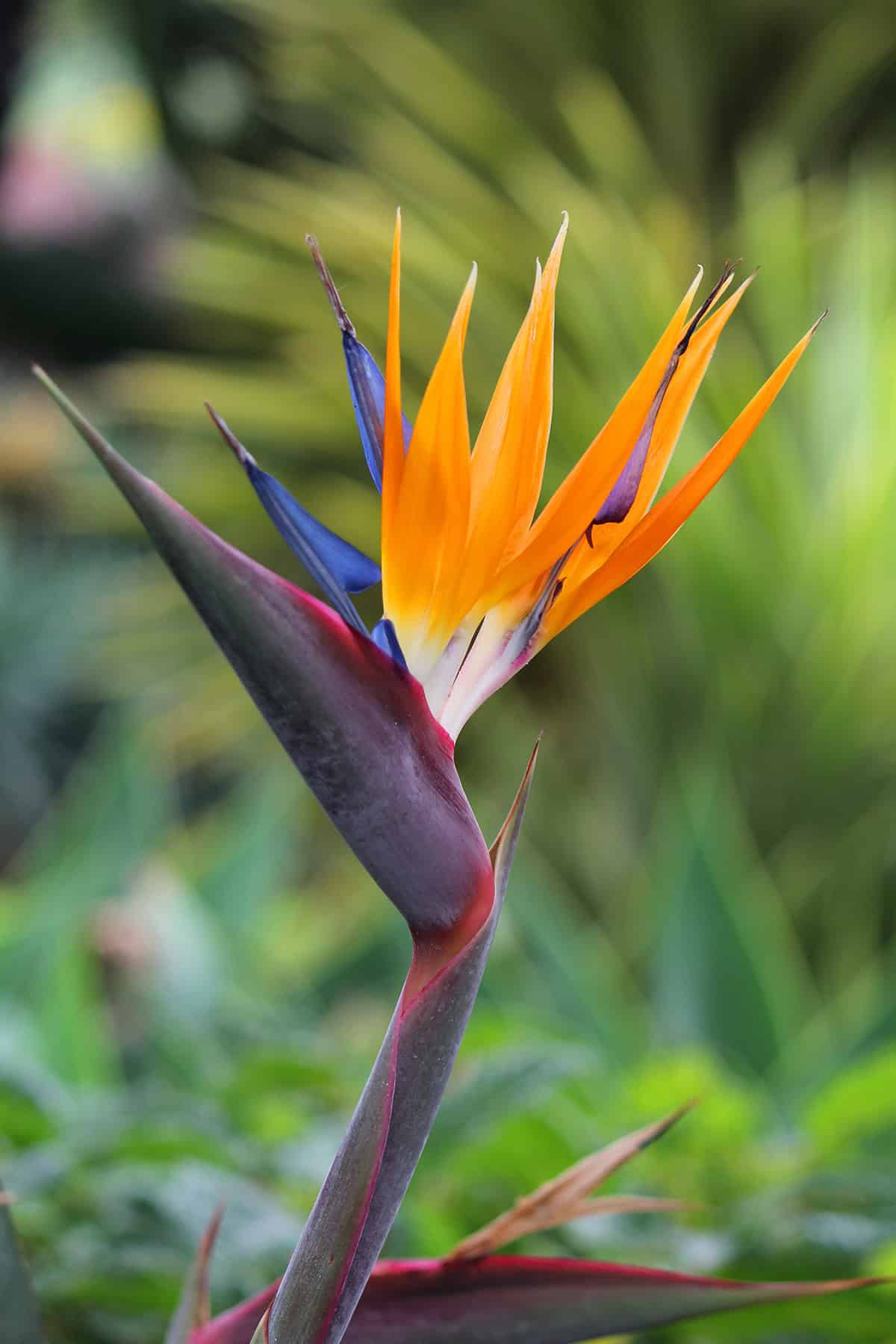
The ideal temperature for growing Bird of Paradise plants is between 65-85°F (18-29°C) during the day and around 50-55°F (10-13°C) at night. Keep your plants away from cold drafts, as temperatures below 50°F (10°C) can harm them.
When it comes to humidity, Bird of Paradise plants thrive in high levels, similar to their native tropical environment.
To increase humidity around your plant, place it on a tray filled with water and pebbles. The water will evaporate, creating a humid microclimate. Remember to keep the water level below the pebbles to avoid waterlogged roots.
Regularly mist your plant’s leaves using a spray bottle filled with water. This helps in providing additional humidity, especially during the dryer winter months. However, be cautious about over-misting, as excess moisture can lead to fungal issues.
Fertilizer
Use a slow-release, organic fertilizer that promotes the growth of its gorgeous blooms and lush foliage.
During the growing season, fertilize your Bird of Paradise every two months. A balanced fertilizer, such as a 10-10-10 or 14-14-14 formula, is suitable. You can either use granular fertilizer or water-soluble fertilizer. Make sure to read the label and follow the instructions on your chosen product.
In addition to the balanced fertilizer, you can provide extra nutrients for your Bird of Paradise by using specific garden fertilizer.
Propagation
To propagate your bird of paradise, you have two main methods: seed or division. Choosing the right technique depends on your preference and the maturity of the plant.
By Seed
Collect mature seeds from the plant’s fruit or buy them from a trusted supplier. Soak the seeds for 24 hours to soften the seed coat and encourage germination.
Plant the seeds in a well-draining mix of potting soil and perlite. Keep the soil consistently moist and warm, around 75 to 85°F. Be patient, as germination can take up to three months. Once the seedlings have a few leaves, transplant them into individual pots and care for them as usual.
By Division
Division is best done when the bird of paradise has formed a large clump and is less likely to flower freely. Carefully dig up the plant, keeping the root ball intact. Using a sharp, sterile knife, divide the plant into smaller sections, ensuring that each division has enough healthy roots and leaves. Replant the divisions in well-draining soil, and water them as needed.
Aftercare
Your newly propagated plants require adequate sunlight and moisture for healthy growth. Place them in a location with full sun to slight shade and water regularly, ensuring the soil remains slightly moist. Monitor for pests and diseases, as young plants can be more susceptible. Fertilize your bird of paradise plants during the growing season to support their development and eventual flowering. These plants are slow-growing, so it may take some time for them to reach their full potential.
Pruning
To maintain a healthy Bird of Paradise, timely pruning is essential. Start by removing any dead leaves and excess growth at the base of the stalk. Regular pruning ensures a tidy appearance and encourages new growth.
When pruning, focus on the flower stalks that have finished blooming. Remove the stalks by cutting them as close to the ground or main stalk as possible. You can carry out this process throughout the year as necessary.
In the case of a White Bird of Paradise, it is valuable to thin the offshoots occasionally. It promotes better air circulation and prevents the plant from becoming too dense. Remember to keep the cuts clean and always use sharp pruning tools to avoid damaging your plant.
Potting and Repotting
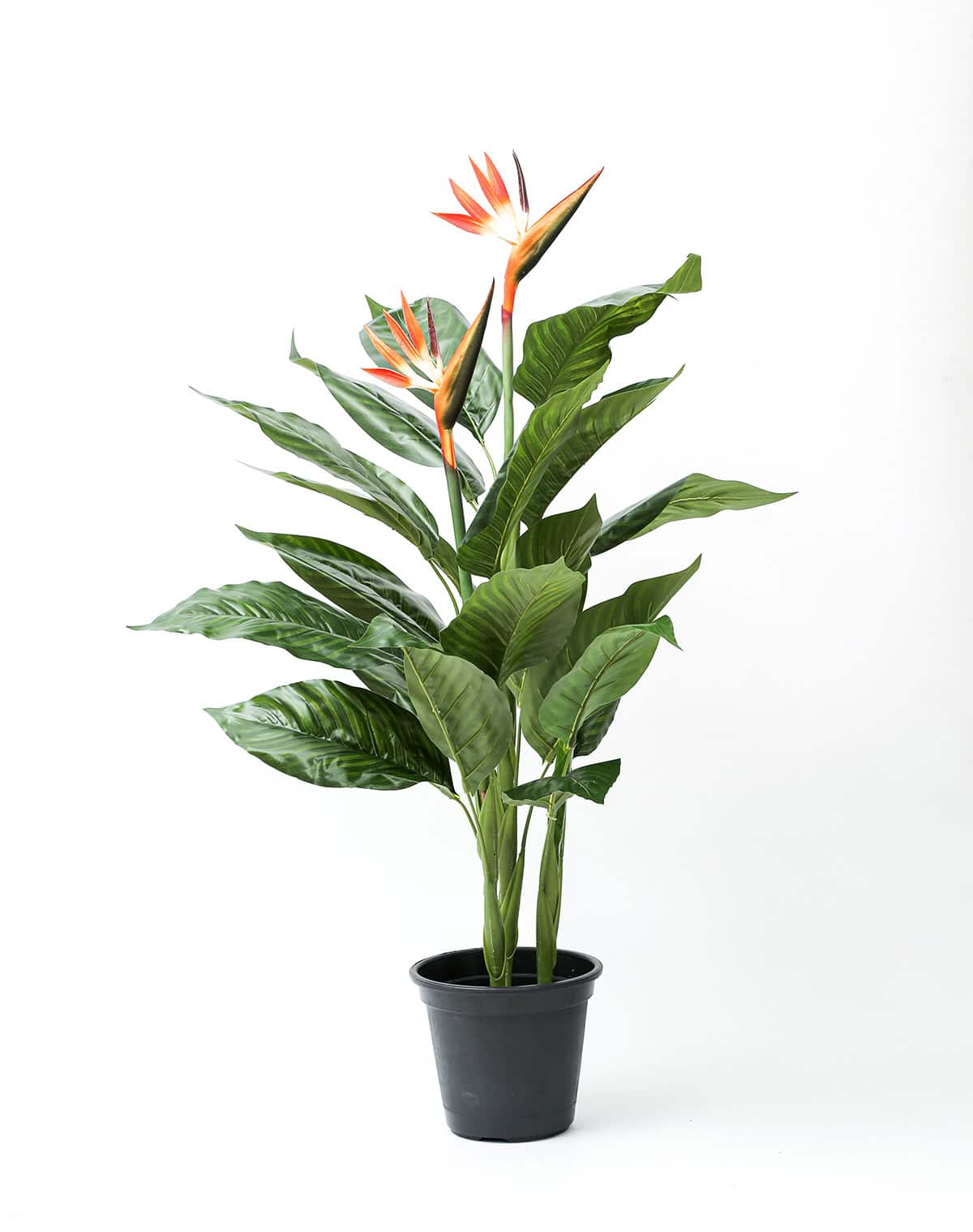
When potting your Bird of Paradise, choose a container that is slightly larger than its current size. Ensure that the pot has drainage holes to prevent waterlogging. Use a well-draining, high-quality potting mix to provide your plant with the necessary nutrients.
Repotting is essential for the growth of your Bird of Paradise. Young plants should be repotted every year to ensure proper growth. Meanwhile, mature plants should be repotted every two to three years to maintain their overall health[^1^].
When repotting, be gentle with the root system and choose an appropriate potting mix. Refrain from repotting a plant that has just begun flowering, as it may disrupt the blooming process.
During the repotting process, remember to provide your plant with ample space. Bird of Paradise plants like to be slightly root-bound but still need room to grow. Carefully remove the plant from its current pot and place it in the new container. Continue to add fresh potting mix around the root ball, making sure to not bury the plant too deep.
Common Problems & Troubleshooting
When growing Bird of Paradise, you may encounter various leaf problems. Leaves can become discolored, acquire spots, or curl. To address this, ensure your plant is receiving the proper amount of water, light, and nutrients. Overwatering or inadequate drainage might lead to root rot, so be cautious not to overdo it.
When it comes to pests, your Bird of Paradise may occasionally suffer from mealybugs, scale, and spider mites. Inspect your plant regularly and treat infestations as soon as they are detected. Use insecticidal soap or neem oil to tackle these pests and keep your plant healthy.
Another issue you might experience is the lack of blooms. This could be due to insufficient light or inadequate fertilization. Position your Bird of Paradise in a well-lit, sunny spot and apply a balanced fertilizer regularly. With the right care, your plant should produce its exotic, bird-like flowers.
Lastly, your Bird of Paradise may show signs of stress due to temperature fluctuations. These plants prefer a consistent temperature range, and leaving them in an area with drafts or sudden temperature changes can lead to leaf curling or drooping. Find a stable environment for your plant, avoiding areas near vents, radiators, or open windows.
